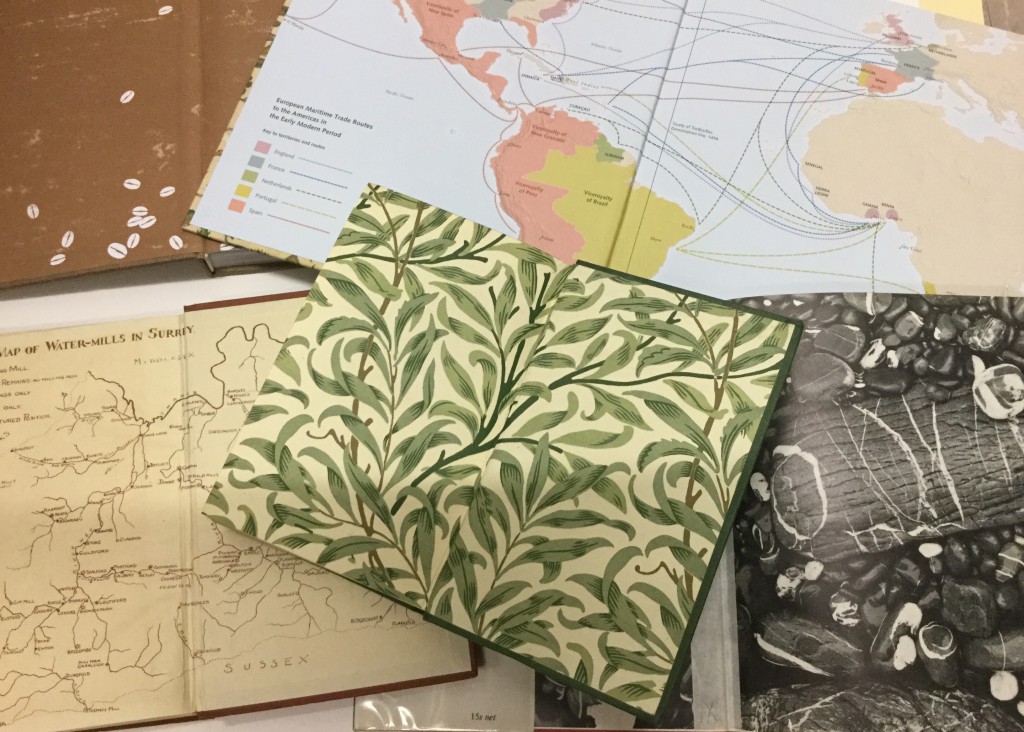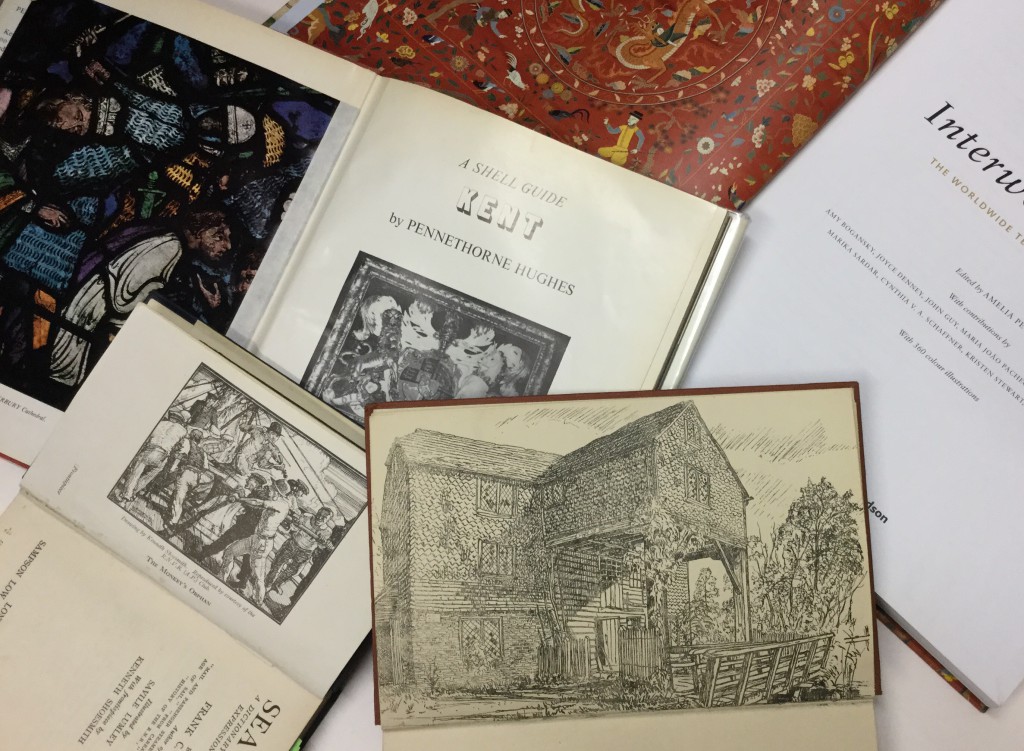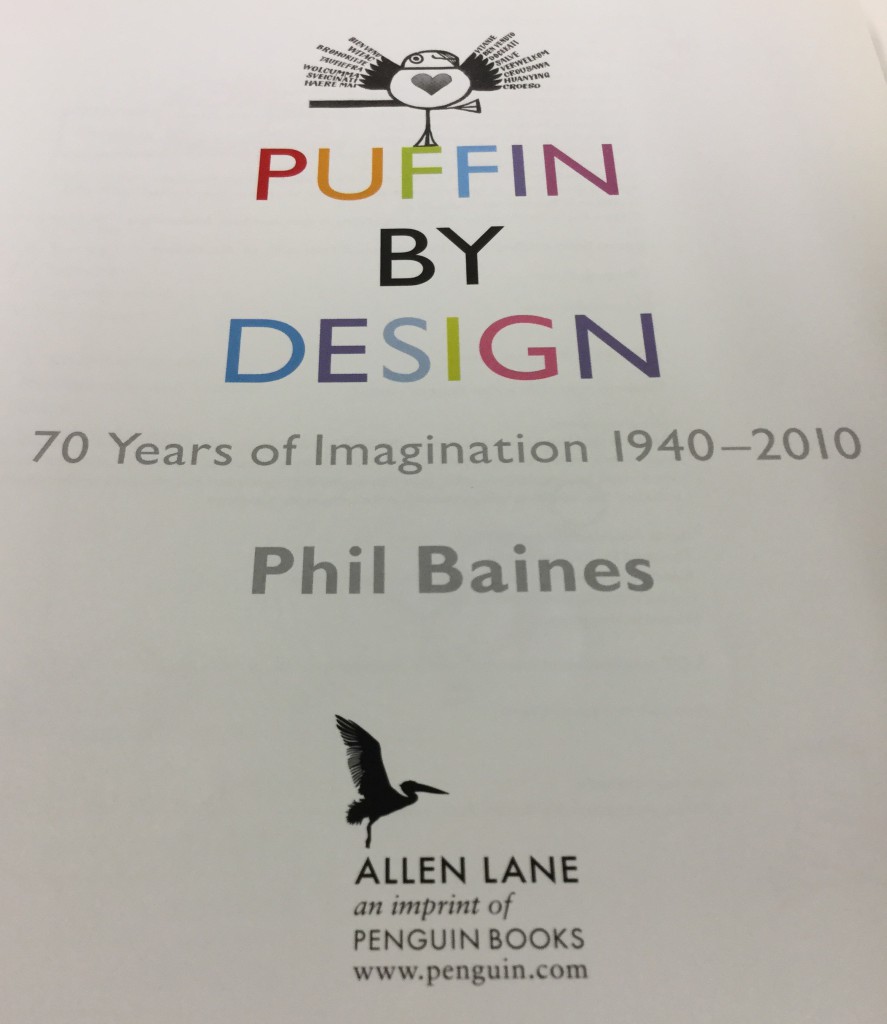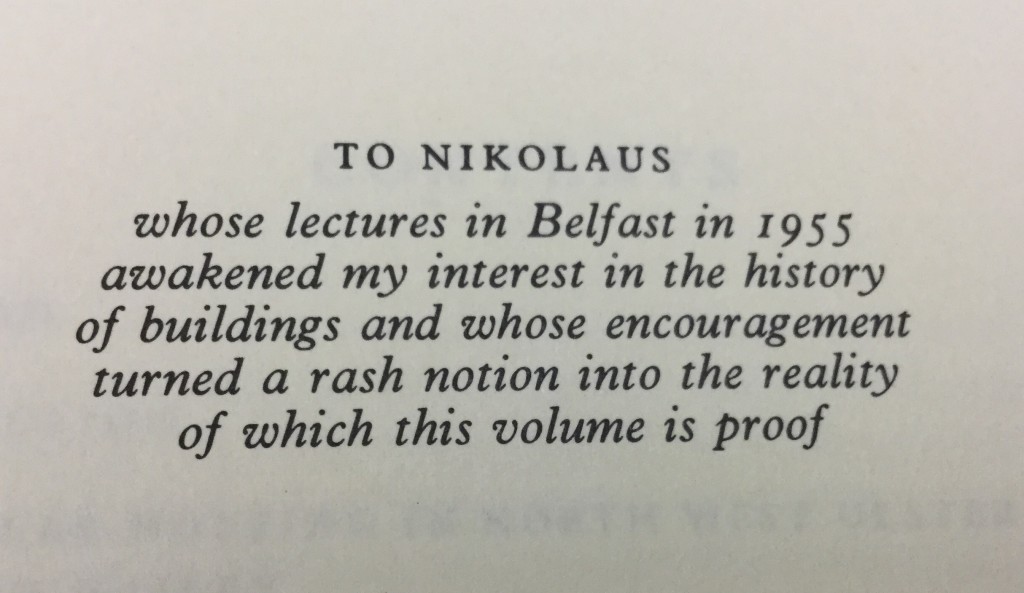Anatomy of a book [Part 2]: the inside
Fiona Campbell continues her Anatomy of a book ….
The inside of a book is made up pages which are called leaves. The front of a leaf, which is the right-hand page, is referred to as recto and always has an odd page number. This is regarded as the more important of the two sides and the main text will always begin on a recto page. The left-hand page, the back of the leaf, always has an even page number and is referred to as verso.
The endpapers are the leaves at the very beginning of the book, before the half-title page, and at the very end. In hardback books one half is pasted to the inside of the cover and the other half is free- this is sometimes known as the flyleaf. They serve to hold the cover and the text together. The endpapers used to be marbled and are now often decorated in some way, or have information such as maps. Persephone Books have revived the tradition of decorative endpapers and use textile designs that are contemporary with the original publication date of the book.

On the front endpaper or on the flyleaf there may be bookplates. These are small printed labels which are glued in place. Bookplates can show ownership, or the fact that a book has been donated or has been won as a prize. The ownership bookplates will have the owner’s name either printed or written on them (owners can, of course, include institutions such as libraries), or details of the donor or the prize winner. The second type is signed by the author and allows them to sign lots of books without having to sign the actual books. Bookplates can be off-the-peg or custom-made.

A book generally consists of three parts:
- Preliminary matter (also called prelims or front matter)
- Main text
- End matter
Books will generally have most of the following arrange in this order but not always.
Preliminary matter
This is material that precedes the main text of the book. It will always include some, or maybe all, of the following generally in this order:
Half-title page
This is the first page after the flyleaf and it has the title but doesn’t include any subtitle or author details.
Half-title verso
Often this is blank but it may be used for the frontispiece.
Frontispiece
An illustration or photograph that is placed on the half-title verso.

Title page
The page after the half-title page and has details of the title, subtitle, volume number if there is one, author or editor, publisher and publication date.

Colophon
A publisher’s emblem that usually appears on the title page. The colophon used to be placed at the end of a book or manuscript and contained the title, the scribe’s or printer’s name, date and place of printing.
Title page verso (also known as the copyright page)
This is on the reverse of the title page, (also known as the title page verso) and has copyright details, publisher’s information, details of the edition, etc. Sometime this page is found at the end of a book as part of the end matter.
Printer’s Key
This appears on the copyright page and is a sequence of numbers from 1 to 10 that are used to indicate the print run of a book. If the 1 is still visible then the book is still in the first printing of that edition, if the 1 has been removed it is in the second printing. With print on demand technology this may eventually become obsolete.
CIP (Cataloguing in Publication) cataloguing record
This is a record produced by the British Library, prior to publication of the book, and it provides bibliographic information on the title for librarians, booksellers and publishers. This includes a Dewey class no, the number of pages, height, ISBN.

Dedication
This usually appears after the copyright page. Here is a dedication from the North West Ulster volume of Pevesner’ s The Buildings of Ireland series, written by Alistair Rowan. The dedication is to Nikolaus Pevsner, the art historian who began the Pevsner’s Building and Architectural guides series.
Foreword
This is a recommendation of the work written by someone other than the author.
Preface
This is where the author sets out the purpose and contents of the book.
Acknowledgements
Here the author acknowledges and thanks those who have given support, assistance and inspiration with the writing of the book. Copyright acknowledgments are legally required where copyright material such as poems, songs, quotations and illustrations, have been reproduced in the book.
Contents
In the contents the title and the initial page number of each section in the preliminary matter, main text and end matter are listed.
List of illustrations, figures and maps
List of tables
List of abbreviations
List of contributors
Note to readers
Epigraph
This is a relevant quotation placed before the main text.
Main text
This is the main body of the work. It may include an introduction. The text maybe divided into parts, and then chapters within those parts. The chapters themselves may then be divided into sections and subsections, and then into paragraphs.
Afterword
Usually this is written by someone other than the author and is much the same as the epilogue.
End matter
This consists of material that supplements the text and the index, if there is one. Generally, fiction title won’t have an index.
Appendix
Provides additional information to supplement the main text.
Glossary
Explains specialist terms that are used in the main text.
Endnotes
Instead of placing footnotes at the bottom of pages within the text, or at the end of chapters, they can all be listed here.
Bibliography
Lists books and articles that the author has used in their research.
Notes on contributors
If a book is a collaboration biographical details of the authors will be included here.
Picture credits
This lists the copyright owners of pictures that have been used.
Index
Page numbers
Page numbers are known as folios. The preliminary matter pages are usually numbered with lower-case Roman numerals but the numbers are not shown on each page, though every page has its number. This is to allow for alterations to be made to the preliminary matter, for example sections being left out or altered in length, without affecting the page numbering of the main text. The main text and end matter is numbered with Arabic numerals. The page number may appear at the bottom, top or at the side of a page.
Running header
This is the book title, chapter title or other heading which appears at the top of, usually, every page. It can be placed at the bottom of the page in which case it is known as a running footer.
See also Anatomy of a book – Part 1: the outside
See the sites below for more information about all things book-related.
http://www.vam.ac.uk/page/b/books
[ Fiona Campbell, Library Assistant ]
http://www.emptymirrorbooks.com/collecting/bookselling.html
